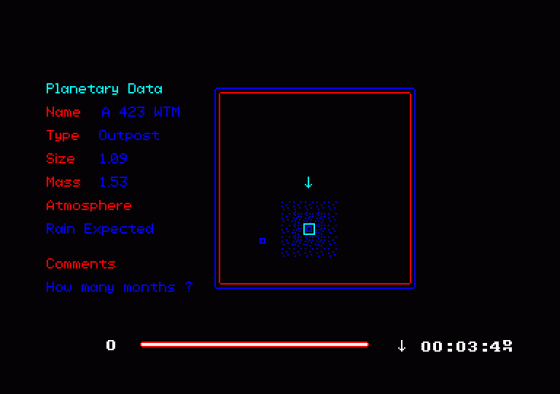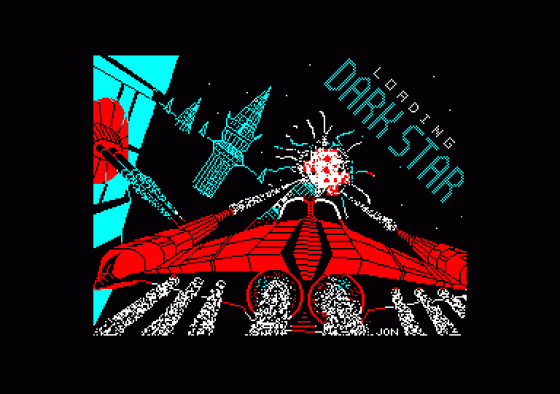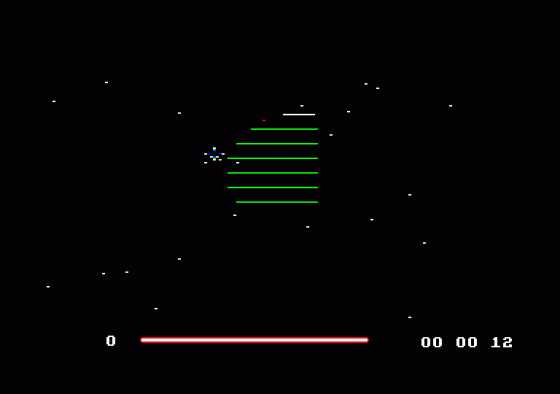
Amstrad Computer User
 1st May 1985
1st May 1985
Categories: Review: Software
Publisher: Design Design
Machine: Amstrad CPC464
Published in Amstrad Computer User #6
Dark Star
No talking bombs or space-hoppers in this one, but you will not have time to miss them. 'Want yer mouse?' quizzes the first Hall of Fame entry. Too much of this all-action space combat simulation could leave you thinking this was a sensible thing to be asked.
The game loads almost continuously, with a colourful hi-res title page after 60 seconds, then an excellent set of game/sound/keyboard and joystick control options some 2.8 minutes later (all text with proportional spacing!). Beginners can choose to disarm the enemy while they learn to fly the ship, and nerve wracking stereo sound effects can be selectively silenced. The overall game difficulty may be altered from a level almost anyone could manage, to that possible only by those also driven at 4 MHz.
The point of the game - to liberate at least one planet from each sector of the regularly re-created universe - is hardly original, but that thought does not last long as you plunge headlong through the star-studded blackness of space, desperately fighting off alien craft, and dodging their spluttering, spinning fireballs. By all means fire back, but to refresh your energy banks, fly through the pulsating blue rectangles as they swoop towards you. Travel to adjacent sectors of the universe is achieved by diving through the rotating hyper-space windows. These inject your craft into colourful warp tunnels which snake their way into the new sector.

All this adds up to an experience somewhat like flying through thick snow, with added pin-wheels, followed by a 300mph drive through the Dartford Tunnel during land slippage This alone is enough to keep the best games-players hard at work whilst those looking on, having been treated to the best in 3-D perspective sight and sound, might well feel slightly ill.
Pressing on to the green planets, you will find a new vista of multi-coloured city lights sweeping below you from the horizon. Using the planet map you make your way towards the enemy installations, effectively portrayed in the wire-frame format, and there weave in and out (and over!) the battle scene demolishing the attacking towers with your armaments. Stricken buildings fall gracefully into the ground, whilst yet more spring into view. If your craft's energy is to be maintained, a sequence of coloured squares must be flown through as your attack proceeds; whilst the end of your run is marked by a clump of buildings. If you succeed in removing the central tower then the base is considered fallen, and you fly on to knock out any remaining bases on the planet. You are then free to return to normal space-flight, using the universe map to plan your next move.
The graphics and stereo sound in this program are spectacular and convincing; it is surprising how much can be achieved using coloured horizontal and vertical lines, plus a large number of dots! The whole action is fast, smooth, and well orchestrated, and anyone who found the combat sequences in Codename Mat exciting, will enjoy this game tremendously, without feeling that they have two games the same.
It appears that this program is not sold by Amsoft, probably because they were unable to come up with the 10,000 marbles requested by its author, Simon Brattel. Why Simon should want these I cannot imagine, as he obviously has more than his fair share already - at least as far as programming is concerned. Dark Star deserves considerable success on the 464 - a leader of spacefight simulations.





